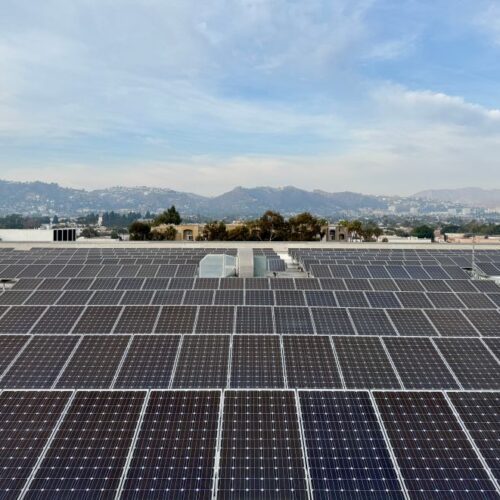
us s spike in electricity use is slowing down a bit: On Tuesday, the US Energy Information Agency released its latest data on the electricity generation landscape in the United States for the first half of 2025. The report indicates that the previously notable surge in electricity consumption is beginning to stabilize, with growth rates in coal usage also experiencing a decline. Meanwhile, solar energy continues its upward trajectory, showing signs of potentially surpassing hydroelectric power generation by the end of the year.
Key takeaways
- The growth in electricity demand has decreased from five percent to three percent year-over-year.
- Coal usage has decreased from a 20 percent increase to just under 17 percent compared to the previous year.
- Solar power is expected to overtake hydroelectric energy generation soon.
Electricity Demand Trends
Historically, the United States has experienced relatively flat electricity consumption over the past few decades. However, the landscape began to change significantly over the last year, driven in part by the increased demand from data centers and other technology-driven sectors. Earlier in 2025, statistics indicated that electricity demand had risen by approximately five percent compared to the same period in 2024. This surge was attributed to a combination of factors, including economic recovery and the growing reliance on digital services.
As the year progressed, particularly during the spring months, this rapid growth in electricity demand started to taper off. The latest report from the Energy Information Agency shows that total electricity demand for the January-through-June period is now up by three percent year-over-year. This moderation suggests that the initial surge may have been influenced by temporary factors, such as seasonal weather patterns and post-pandemic adjustments in energy consumption behaviors.
Coal Usage Decline
The moderation in electricity demand has had a significant impact on coal usage across the country. Earlier in 2025, coal consumption was reported to be up by about 20 percent compared to the same period in 2024. This increase was concerning, given the environmental and health implications associated with coal-fired power generation. However, more recent data indicates that coal usage has declined to just under a 17 percent increase year-over-year. While this still reflects an increase, it is a sign of a potential shift in energy consumption patterns.
Despite the slight decline in coal usage growth, the continued reliance on coal remains problematic. The environmental consequences of coal mining and combustion are well-documented, including air and water pollution, greenhouse gas emissions, and adverse health effects on communities near coal plants. Additionally, the economic viability of coal has come under scrutiny as renewable energy sources become increasingly cost-competitive.
Efforts to phase out coal in favor of cleaner energy sources have faced challenges, particularly during the Trump Administration, which actively promoted the coal industry. A notable example is the administration’s intervention to keep a coal plant slated for closure operational. Such actions have complicated the transition to cleaner energy alternatives and have drawn criticism from environmental advocates and public health experts.
The Rise of Solar Power
In contrast to the stagnation in coal usage growth, solar power continues to make significant strides in the energy landscape. The latest data highlights a robust expansion in solar energy generation, driven by technological advancements, cost reductions, and supportive policies at both state and federal levels. As solar installations become more widespread, the industry is on track to surpass hydroelectric power generation by the end of 2025, marking a significant milestone in the transition to renewable energy.
Several factors have contributed to the growth of solar energy in the United States:
- Cost Reductions: The cost of solar panels and related technologies has decreased dramatically over the past decade, making solar energy more accessible to consumers and businesses.
- Government Incentives: Federal and state incentives, such as tax credits and rebates, have encouraged the adoption of solar energy systems.
- Public Awareness: Increased awareness of climate change and the environmental benefits of renewable energy has driven consumer interest in solar power.
As solar energy continues to gain traction, it is expected to play a critical role in the U.S. energy mix. The transition to renewable energy sources not only helps mitigate climate change but also promotes energy independence and job creation in the clean energy sector.
Future Outlook
Looking ahead, the energy landscape in the United States is poised for further changes. While the recent moderation in electricity demand may indicate a temporary stabilization, ongoing trends suggest that the shift toward renewable energy sources will continue to accelerate. The combination of technological advancements, policy support, and consumer demand for cleaner energy solutions will likely shape the future of electricity generation in the country.
Moreover, the continued decline in coal usage growth could signal a turning point in the energy transition. As more states implement policies aimed at reducing greenhouse gas emissions and increasing the share of renewable energy in their power generation portfolios, the reliance on coal is expected to diminish further. This transition will not only benefit the environment but also align with broader economic trends favoring sustainable energy solutions.
In conclusion, while the recent data from the Energy Information Agency indicates a slowing in the spike of electricity use in the United States, the ongoing growth of solar power and the moderation in coal usage reflect significant shifts in the energy landscape. The transition to cleaner energy sources is essential for addressing climate change and ensuring a sustainable energy future.
Source: https://arstechnica.com/science/2025/08/us-electricity-2025-solar-continues-growth-coal-still-up/
Was this helpful?
Last Modified: August 27, 2025 at 5:52 am
3 views















